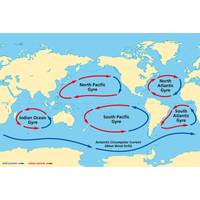
The World’s Most Powerful Ocean Current Could Slow by 2050
down.The ACC is located just to Australia’s south. It flows around Antarctica and connects our planet’s three major ocean basins – the Pacific, Atlantic and Indian Oceans.The ACC is more than 100 times stronger than the current of the Amazon River and five times stronger than the Gulf Stream.It’s a powerful current that separates the Antarctic continent from its northern neighbors, acting as a physical and oceanographic barrier that isolates the icy continent.Over the years, there has been a lot of scientific debate about the impact of climate change on the ACC. The theory was
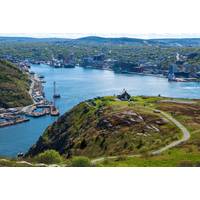
Spaces & Places: Inside the ‘Crown Jewels’ of Newfoundland & Labrador
, and innovation. Together, they are the spaces and places that help NL maritime science and technology evolve and thrive.Atop the RockKnown colloquially as The Rock, NL has rugged geology and sticks out into the North Atlantic, which offers dynamic and unpredictable weather system thanks to the Gulf Stream and the Labrador current colliding offshore. Water depths range from 80 to more than 3,800 meters at the infamous Titanic wreck. With a population of just over 500,000, NL has centuries of living by and depending on the sea, explained the Hon. Andrew Parsons, Minister of Industry, Energy and Technology
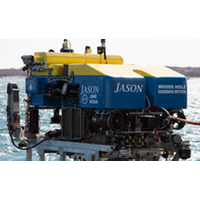
TDI-Brooks Delivers Deepwater Atlantic Habitats II Report
vertical-migrating mid-water community and the benthic zone of the Richardson Reef Complex, as well as those of midwater organisms with the walls of the canyons and shallow seeps.• The unique oceanographic conditions in the region have a corresponding influence on the various communities. The Gulf Stream cuts through the center of the study area, causing vertical mixing in its core down to 1,000m. This promotes a rapid translation of food to depth and nutrients to the surface, which brings elevated trophic and genetic connectivity of the components of the ecosystem. These currents are highly variable
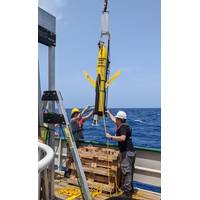
Researchers Study the Fast Gulf Stream Currents
Scientists from the National Oceanography Centre (NOC) recently joined a five-day research expedition to study the role of the Gulf Stream in a critical component of the global carbon cycle.The Gulf Stream is thought to play an integral role in the oceanic carbon cycle, delivering high-nutrient, low-anthropogenic (human derived) carbon waters to the North Atlantic subpolar gyre where they sustain biological carbon drawdown and enable the uptake of large quantities of CO2 from the atmosphere.However, many unknowns remain regarding how these deep waters reach the surface, and their effect on carbon
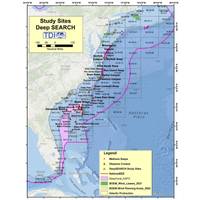
TDI-Brooks Finalizes Report for Deepwater Atlantic Habitats II
vertical-migrating mid-water community and the benthic zone of the Richardson Reef Complex, as well as those of midwater organisms with the walls of the canyons and shallow seeps were seen.The unique oceanographic conditions in the region have a corresponding influence on the various communities. The Gulf Stream cuts through the center of the study area, causing vertical mixing in its core down to 1,000 m. This promotes a rapid translation of food to depth and nutrients to the surface, which brings elevated trophic and genetic connectivity of the components of the ecosystem. These currents are highly
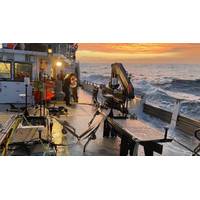
NASA’s S-MODE Field Campaign Deploys to the Pacific Ocean
added. “Being part of a mission of this scale can be exciting and nerve-wracking.”Aboard another aircraft is an instrument that can image microscopic marine life in billions of colors. Resembling a metal basketball, JPL’s Portable Remote Imaging SpectroMeter (PRISM) will ride inside a Gulfstream III jet, spying phytoplankton blooms in hundreds of wavelengths ranging from ultraviolet to infrared.By tracking chlorophyll, a telltale signature of these algae, PRISM will help scientists visualize ecology interacting with ocean currents, providing exponentially more information than familiar
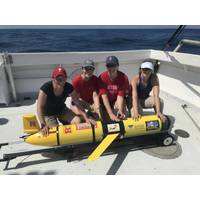
INTERVIEW: Rutgers University Uses Slocum Glider for Ocean Acidification Study
lot of fresh water coming in from our rivers and our estuaries, and that actually acts to reduce pH or cause the water to become more acidic nearshore.Then offshore, we have something completely opposite, where we have this warm salty water just sitting off the shelf and that's influenced from the gulf stream. And during mixing events like storms, but also during the autumn when we have these heavy wind periods, the water starts to kind of turn over and breaks up that stratification, we actually see relief of the low pH from the summer on the shelf. And so that mixing acts to really just kind of mitigate
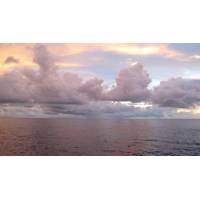
Florida Current is the Weakest Its Been in a Century
The Florida Current, which forms the start of the Gulf Stream, has slowed over the past century and is the slowest it has been at any point in the past 110 years, a new study reveals.Researchers have developed a method of tracking the strength of near-shore ocean currents using measurements made at the coast, offering the potential to reduce one of the biggest uncertainties related to observations of climate change over the past century.“In the ocean, almost everything is connected,” said Christopher Piecuch, an assistant scientist in the Physical Oceanography Department at the Woods Hole
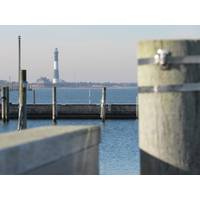
The Benefits of Sustainable Marine Lumber
. For instance, depending on the location, the pilings of many East Coast marina structures are coated with living organisms ranging from corals, sponges, tunicates and sea anemones which, in turn, are the natural habitats for fish including crabs, lobsters, blackfish, fluke and striped bass. Gulf Stream marinas may be providing shelter to grouper, angelfish, triggerfish and butterfly fish. Sea turtles, dolphins and even manatees can be found in the waters around Gulf Coast, Florida marinas.(Photo: Evergreen Forest Products)Marina engineering and construction considerationsFor engineers specifying


 February 2025
February 2025





